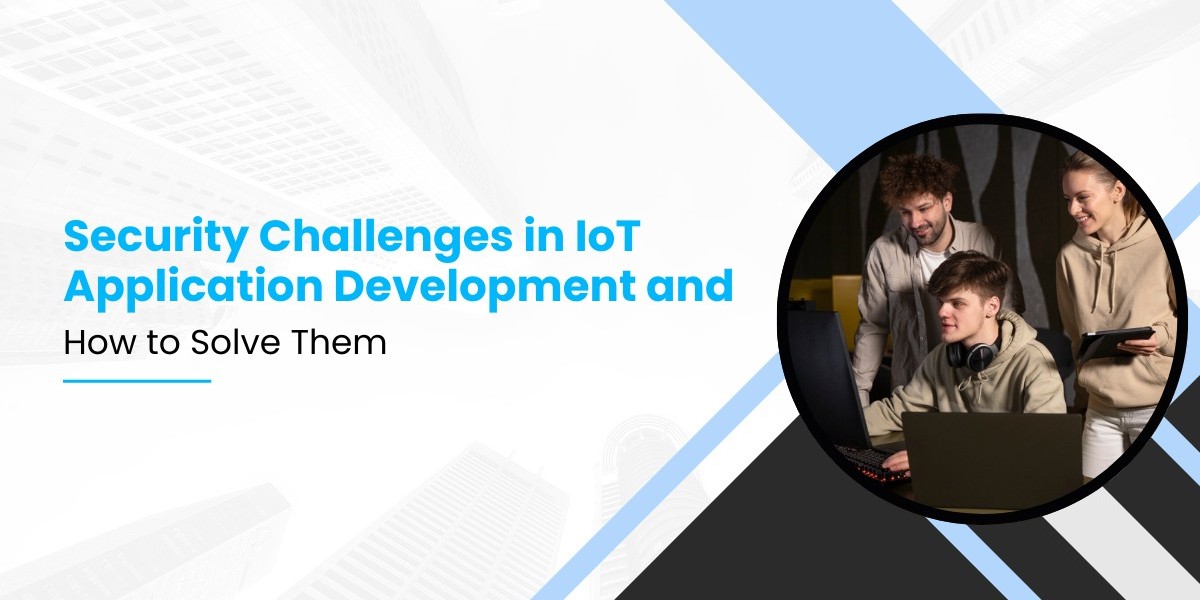The rise of the Internet of Things (IoT) is reshaping industries, homes, and public infrastructure at a rapid pace. By the end of 2025, over 27 billion IoT devices are expected to be online, with sectors like manufacturing, healthcare, logistics, and energy leading adoption. As the digital ecosystem expands, so do security risks. Attackers now target IoT endpoints in one out of every three data breaches, and average costs for IoT-related attacks reach $330,000 per incident.
With 50% of IoT devices found vulnerable in recent assessments and daily cyberattacks against them crossing 820,000 globally, IoT security is one of the toughest and most urgent application development challenges.
Understanding IoT Security Risks
The Expanding Attack Surface
With every new IoT device added to a network, the attack surface grows, increasing security risks. Deployments can scale from a few devices to hundreds of thousands across multiple locations, often with minimal supervision. Cybercriminals exploit this using malware, ransomware, and DDoS attacks.
For example, the Mirai Botnet (2016) infected over 100,000 IoT devices using default credentials, triggering one of the largest DDoS attacks ever, disrupting platforms like Twitter and Netflix. In healthcare, unsecured devices like cardiac monitors or infusion pumps could be exploited, risking patient safety and data privacy.
An IoT Application Development Company can help secure deployments with robust software solutions and real-time threat monitoring, ensuring safety and reliability at scale.
Core IoT Security Challenges
1. Weak Authentication and Default Credentials
Many devices still operate with factory-set usernames and passwords like “admin” or “12345”.
Users often skip changing credentials, leaving devices open to brute force or credential-stuffing attacks.
Why This Matters: Default credentials enabled the Mirai attack, showing how quickly entire networks become vulnerable through a few weak devices.
2. Unencrypted Data Transmission
Unencrypted communications expose sensitive data (health, location, control commands) to interception or manipulation.
Insecure MQTT or CoAP communications are still common.
Impact: Smart home assistants, if left unencrypted, can reveal personal conversations or behavior patterns.
3. Device and Firmware Updates
Many IoT devices lack automated update mechanisms, running outdated firmware vulnerable to public attacks.
Large-scale or remote deployments make manual patching unmanageable, resulting in persistent security gaps.
4. Inadequate Network and Access Controls
Lack of segmentation allows attackers, once inside, to move laterally across networks.
Over-permissive APIs and open ports offer multiple entry points.
Example: In manufacturing, one compromised sensor can lead to an attack on the entire production line.
5. Resource Constraints
IoT devices are often limited in processing power, memory, and energy, leading manufacturers to trade off robust security for performance.
Complex encryption, monitoring, or agent-based software may not be feasible.
6. Lack of Security Standards
With thousands of device manufacturers and protocols, there is little consistency in security implementation.
No universal security standards lead to incompatibility and overlooked vulnerabilities.
7. Physical Security Risks
Devices deployed in public spaces (e.g., cameras, smart meters, transportation) can be physically tampered with or stolen.
Attackers may extract data or install malware directly.
8. Supply Chain Vulnerabilities
Devices and firmware often incorporate components from multiple suppliers, some of which may introduce vulnerabilities or malicious functionality.
Insufficient transparency throughout the supply chain raises risks.
9. Privacy Concerns
IoT devices collect and transmit sensitive user data, including biometrics, voice, location, or industrial secrets.
Poor regulation or insecure design can enable mass surveillance or data leaks.
The Impact of IoT Breaches
Over 46% increase in ransomware attacks targeting operational technology since 2022.
In critical infrastructure, IoT breaches caused shutdowns for up to 23% of victim organizations.
Regulatory penalties for privacy violations, particularly under GDPR and CCPA, add further financial risk.
Reputational damage and loss of customer trust can last years.
Technical Solutions for Securing IoT Applications
1. Robust Authentication
Enforce unique, complex passwords for every device.
Implement multi-factor authentication (MFA) for user access.
Use certificate-based device authentication and mutual TLS for onboarding.
2. Encryption of Data in Transit and at Rest
Apply end-to-end encryption using TLS (minimum v1.2, ideally v1.3) and secure key management.
Never transmit sensitive control or personal data as clear-text.
Encrypt sensitive logs and storage on the devices.
3. Timely and Automated Device Updates
Enable secure over-the-air (OTA) updates for all devices.
Validate update sources and firmware signatures before applying patches.
Maintain and regularly update a device and software inventory for effective patch management.
4. Network Segmentation and Firewalls
Separate IoT networks from IT or business networks using VLANs and strict firewall rules.
Only allow essential network services and block or restrict unnecessary ports.
5. Secure APIs and Communication Protocols
Authenticate and authorize every API call with strong, rotating credentials or tokens.
Validate input and sanitize all data exchanged between devices, hubs, and cloud services.
6. Continuous Monitoring, Logging, and Incident Response
Use automated tools to maintain up-to-date inventories of all deployed IoT assets.
Monitor for unusual device behavior using AI/ML-powered tools.
Log every access attempt, update, and configuration change centrally.
Have a tested incident response plan for rapid containment and forensics after breaches.
7. Supply Chain Security
Vet all suppliers and require security certifications (such as ISO 27001 or equivalent).
Conduct third-party firmware and component security assessments.
Monitor deployed assets for unauthorized modifications.
8. Physical Security Measures
Install tamper-resistant enclosures and sensors on mission-critical or public-facing devices.
Require physical authentication or two-step verification for on-site access.
Industry Best Practices and Compliance
1. Standardization Frameworks
Follow OWASP IoT Top 10 for vulnerability management.
Align with NIST SP 800-213 (IoT Device Cybersecurity Guidance), ETSI EN 303 645 (consumer IoT security).
Adopt Zero Trust principles for all network and device interactions.
2. Data Privacy by Design
Minimize data collection on IoT endpoints.
Provide transparent disclosures and user controls over how their data is collected, stored, and shared.
Ensure compliance with GDPR, CCPA, and other local data protection laws.
Step-by-Step Example: Securing Smart Office Devices
Inventory and Classification: List all connected endpoints—smart lights, cameras, thermostats, environmental sensors.
Credential Management: Replace defaults with unique passwords and enable MFA where possible.
Network Layout: Segment office IoT devices on separate VLANs, blocking Internet access except for required services.
Update Management: Schedule and automate all firmware updates; alert if updates fail.
API Security: Use OAuth 2.0 tokens for integrating with office management software.
Monitoring: Employ a dashboard to check device health, connectivity, and detect anomalies.
Response: Develop incident response playbooks for device breach, including isolate, wipe, and replace.
Tools and Frameworks for IoT Security
Shodan: Search engine for Internet-connected devices to discover exposed endpoints.
Nmap, OpenVAS: Vulnerability and port scanning.
IoT Inspector, Wireshark: Network packet and traffic analysis.
Zero Trust Architecture (ZTA): Approach requiring verification for every access attempt—never trust, always verify.
OWASP IoT Top 10: Community-driven list providing guidance on key risks.
Addressing Emerging Security Challenges
AI-Powered Threat Detection: Integrate machine learning for behavioral anomaly detection.
Automated Incident Containment: Use self-healing systems to revoke keys, quarantine affected devices, or trigger firmware rollbacks upon breach.
Secure Device Decommissioning: Wipe all user and network data before removal or disposal.
User Education: Train employees on safe device deployment and ongoing security maintenance.
Real-World Case Study
A logistics company faced a malware outbreak thanks to unpatched IoT tracking devices. By implementing device inventory, regular patching, strong credential policies, and network segmentation, they reduced malware incidents by 80% within six months and passed industry compliance checks.
Conclusion
In 2025, securing IoT Application Development Services is critical and complex. Developers, architects, and organizations must tackle challenges like authentication gaps, weak encryption, delayed patching, and physical device vulnerabilities. By adopting proactive strategies built on best practices and standardized security frameworks, businesses can minimize risks, cut incident costs, protect user privacy, and maintain trust.
As IoT devices expand in scale, scope, and impact, robust security must be an integral part of every IoT application’s design, deployment, and maintenance plan, ensuring resilience in the age of hyper-connectivity.








